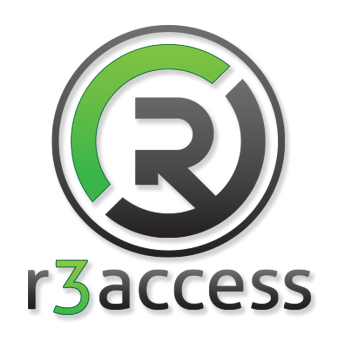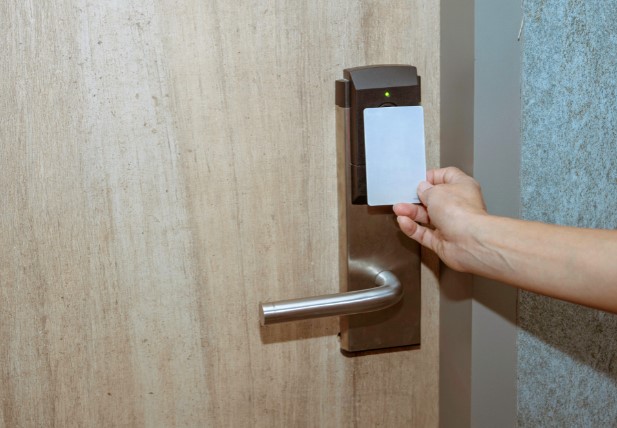In the contemporary security landscape, the need for advanced yet user-friendly solutions is more pronounced than ever. Card readers stand out among these technologies for their robust security features and adaptability across various sectors. These devices, crucial for access control and data protection, have become ubiquitous in our daily operations, providing a seamless blend of security and efficiency. We’ll explore card readers’ expansive role across different industries, shedding light on their significance in modern security frameworks.
Healthcare: Card Readers Ensuring Patient Privacy and Security
The healthcare sector faces unique challenges in safeguarding patient information while providing access to necessary personnel. Card readers are pivotal in securing entrances to restricted areas and enabling access based on predefined credentials. Their application extends beyond entry points to include medication dispensing cabinets and records rooms, ensuring that only authorized individuals can access sensitive materials. This targeted access is vital for complying with health privacy regulations and safeguarding patient confidentiality.
Integrating card readers with hospital management systems enhances workflow efficiency while maintaining strict security protocols. Staff can access secure areas quickly without compromising safety, ensuring patient care remains uninterrupted. Card reader systems can be configured to provide detailed access logs, aiding in audits and investigations, and enhancing the overall security posture of healthcare facilities.
In emergency situations, the versatility of card readers becomes evident. They can be set to allow unrestricted access when needed, ensuring that emergency responders can move freely within the facility. Using card readers to secure pharmacies within hospitals prevents unauthorized access to medications, reducing the risk of theft and misuse.
The future of healthcare security sees card readers at its core, with advancements such as biometric integration and mobile credentials enhancing security while offering convenience to staff and patients. As hospitals continue to evolve, the adaptability and scalability of card reader systems make them a staple in healthcare security strategies.
Education: Safeguarding Students and Assets
Educational institutions from kindergarten to universities employ card readers to ensure the safety of students and staff while protecting valuable assets and confidential information. These systems control access to various campus facilities, including classrooms, dormitories, and administrative offices, ensuring that only authorized individuals can enter sensitive areas.
The flexibility of card readers allows for tailored access rights, ensuring that students, faculty, and staff have appropriate levels of access throughout the campus. This segmentation not only enhances security but also aids in managing campus traffic, particularly during large events or emergencies.
Card reader systems in educational settings are often integrated with other systems such as library management, dining services, and attendance tracking. This integration streamlines campus operations and provides a cohesive experience for users, allowing institutions to leverage technology to meet the diverse needs of their populations.
As digital transformation continues to influence educational methodologies, the role of card readers expands to include digital locker access, equipment checkouts, and even secure examination environments. The ability to update access rights remotely and track usage patterns contributes to a safe and efficient educational environment, adapting to the changing landscape of academia.
Corporate: Securing Assets and Information
Protecting assets, information, and personnel is paramount in the corporate world. Card readers form the backbone of corporate security strategies, controlling access to facilities, data centers, and sensitive information areas. These devices ensure that only authorized employees and visitors can enter specific zones, reducing the risk of internal and external threats.
Card readers’ application in corporate environments extends to time and attendance tracking. They integrate seamlessly with HR systems to provide accurate records for payroll and personnel management. This dual functionality enhances operational efficiency while maintaining a secure workspace.
Corporate entities also leverage card reader technology with other security measures, such as surveillance cameras and alarm systems, to create a comprehensive security ecosystem. Integrating with IoT devices and smart building systems further elevates the security and functionality of corporate environments, enabling real-time responses to security incidents and environmental adjustments based on occupancy.
As corporations embrace remote and hybrid work models, the role of card readers evolves to accommodate new security challenges. Mobile credentialing and remote access management become increasingly relevant, ensuring that security protocols remain robust in a changing work landscape.
Government and Military: Upholding National Security
For government and military installations, security is not just a requirement but a matter of national safety. Card readers safeguard sensitive information and control access to restricted areas. Advanced encryption and multi-factor authentication ensure that access is granted only to individuals with the necessary clearance and credentials.
These environments often require card readers with higher security features, such as biometric verification and smart card technology, to prevent unauthorized access and espionage. Integrating card readers with national security databases and watchlists further enhances security measures, ensuring real-time updates and responses to potential threats.
The adaptability of card readers allows for the implementation of varying security levels within the same facility, catering to the nuanced access requirements of different areas. This tiered access control is crucial in environments where information sensitivity varies widely across different departments or units.
They ensure that authorized personnel can access critical areas immediately during emergencies, facilitating a swift and coordinated response.
Hospitality: Enhancing Guest Experience and Security
The hospitality industry uses card readers to balance operational efficiency with guest security and comfort. Hotels, resorts, and entertainment venues use card readers to give guests secure and convenient access to their rooms and facilities. This system enhances the guest experience by streamlining check-ins and access and ensuring that only guests and authorized staff can enter specific areas.
Integrating card readers with property management systems allows personalized guest experiences, enabling access to amenities based on reservation details. Guests can enjoy seamless access to gyms, pools, and exclusive areas without needing multiple keys or access codes, enhancing their overall stay and satisfaction.
In the event of a security incident, card readers enable quick lockdowns and access restrictions, protecting guests and staff. The ability to remotely update access rights and monitor entry points in real time adds a layer of security essential in today’s hospitality environment.
The future of hospitality sees card readers integrating with mobile technologies, allowing guests to use their smartphones as room keys. This advancement improves guest convenience and offers enhanced security features, such as dynamic encryption and the ability to instantly revoke access if a device is lost or stolen.
Public Transportation: Streamlining Commutes and Enhancing Security
Public transportation systems worldwide are adopting card reader technologies to improve efficiency and security. These systems enable contactless payments and access, reducing queues and wait times while enhancing passenger experience. Card readers facilitate the implementation of fare structures that can vary by time of day, passenger type, or distance traveled, making public transit more accessible and user-friendly.
The security benefits of card readers in public transportation extend beyond fare collection. They provide a means to control access to restricted areas such as maintenance yards and operation centers, ensuring that only authorized personnel can enter. Additionally, the data collected from card usage can aid in crowd management and service planning, enhancing safety and efficiency across the network.
Card readers contribute to public safety by enabling touchless entry and payment, reducing the spread of pathogens in global health challenges. They also facilitate tracking passenger flow, which can be critical in contact tracing and managing public health responses.
Integrating card readers with real-time information systems can further enhance the commuter experience, providing passengers with up-to-date information on schedules, delays, and congestion, and enabling more informed travel decisions.
Contact R3 Access
The innovative application of card readers across diverse industries underscores their pivotal role in modern security and operational strategies. From healthcare to public transportation, these devices offer a unique combination of efficiency, convenience, and security, addressing the dynamic challenges faced by various sectors. As technology advances, the capabilities and applications of card readers will continue to expand, further integrating into the fabric of our daily lives and operations.
At R3 Access, we are at the forefront of this technological evolution, offering advanced security solutions that meet the demands of an ever-changing landscape. Whether you are looking to enhance your existing systems or implement new security measures, R3 Access is here to provide expert guidance and cutting-edge solutions. Contact us today to secure your operations and embrace the future of access control.


